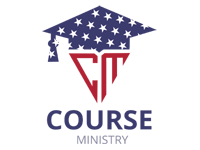
2024 has just begun, with federal sectors preparing to speed up their essential chores. It’s a season where businesses and organizations consider completing crucial filings and inspections in order to meet required compliance expectations. Monetary and fiscal policies are interested in the circulation of money carried out by federal agencies and aggregate terms for government taxation and expenditure activities. What are compliance expectations or standards? More precisely, these are law-abiding standards meant to be met by eligible businesses. The eligibility criteria differ based on the size and other related parameters. This blog will reflect on the accounting, finance, payroll, and taxation expected cues to prepare for the 2024 federal season.
The payroll procedure revolves around compensating the aggregate pay of employees for the work they have done for the organization or business. Considerably, the payroll process flows throughout the year through monthly salaries, perks, benefits, and reimbursements. Apart from this, specific accounting and finance cues also play a crucial role in the process. With such an intense accumulation of multiple areas, taxation is the remaining spectrum, which tends to focus on managing and handling precise tax withholding and payment statements. We know how hard it is to manage stuff like Multi-state Employees Taxation, and other Payroll Forms. In situational layers or sometimes via co-dependence, all these aspects give a quality quantitative figure to any business’s monetary and fiscal side.
The most contemporary payroll industry has relied on Cloud technology, AI (Artificial Intelligence), and RPA (Robotic Process Automation) tools. With such technology, payroll management has become a more secure and threat-detectable platform that endorses the idea of accuracy in functioning. Threatening situations could be defined as miscalculations or situations where the taxes aren’t recorded precisely. In the age of e-filings, cloud technology has been adapted widely among payroll professionals as it cuts down the paperwork and makes digital recordings more compatible. Organizations with any number of strengths are steadily adapting these automation tools. Integration with HR technology is another trend assisting payroll professionals to turn multidimensional while handling payroll hustles and employee-organization compliance pacts. This collaboration raises the bar of efficiency for the professional handling both profiles. Not only these appraisal factors but neglected or outworked areas are also considered to build a payroll industry with a bit more loophole proof. Gig culture lacks a comfortable understanding of payroll administrations. As it’s not a complete employee-employer bond here, we are talking about the contractual bond. However, payroll management is quite different here. Payroll software is designed apart from traditional dynamic patterns nowadays. The scope of fluidity has paved its way among payroll software. Another crucial outcome of updated payroll software is that it endorses high pay transparency and data security. This is the most crucial advancement that has revolutionized the payroll industry’s flow.
As discussed above, not only payroll but accounting and finance trends are something professionals must stay well versed in to outshine in their respective roles. Payroll, accounting, and HR professionals are the primary custodians who must be well-recited on accounting and financial trends. In the wake of environmental concerns, an accounting professional’s job is to incorporate sustainability metrics of businesses with impactful transparency and reflect on the parameters at which the business affects social or environmental balance. With the pandemic, professionals handling accounts have attained a safe space to say their call on remote work adjustment. With the presented automation technologies and software, accounting professionals can leverage switching to a remote adjustment pattern for a change or revamping their way through work-life balance. The integral collaboration and compliance with renowned global accounting agencies like International Accounting Standards and International Financial Reporting Standards is mandatory and should be ensured over time.
Talking about taxation trends, businesses in the US have widely adopted e-invoicing as it improves the quality of tax collection and diminishes tax gaps. This adaptation actively promotes the scope of digital workflow and data management. Emerging industries of electric automobiles, etc., demand exclusive tax compliance. Governments worldwide are surging to opt for artificial intelligence and automation-assisted technologies with the aim of diversified welfare and progress-driven vision. Besides these trends, nearly half of existing tax forms are up for electronic filing updates. The deadline for filing (electronic or paper) IRS Form W-2 is January 31. 2024, employers should seriously consider deadlines. For IRS Form W-4, the registered amounts on Deductions Worksheets are updated this year. There have been slight changes in IRS Form W-9 (an addition of line 3b), and employers or concerned professionals must keep a check on it. The decision-making around the IRS Form 1099-K $600 threshold is also under the development phase as it is not finalized yet; employers or concerned professionals are suggested to keep tracking IRS notifications thoroughly. Employers or concerned professionals who deal with employees in tax forms are highly advised to stay updated with IRS notifications and updates and act upon them to stay compliant with suggested federal regulations.
In conclusion, the quantitative spectrum of business revolves around taxation, accounting & financial and payroll trends. This accumulation leads to efficient and compliant statements from the business’s end. Keeping up with emerging trends and functioning with respect to compliance factors is a fruitful approach for any venture.




